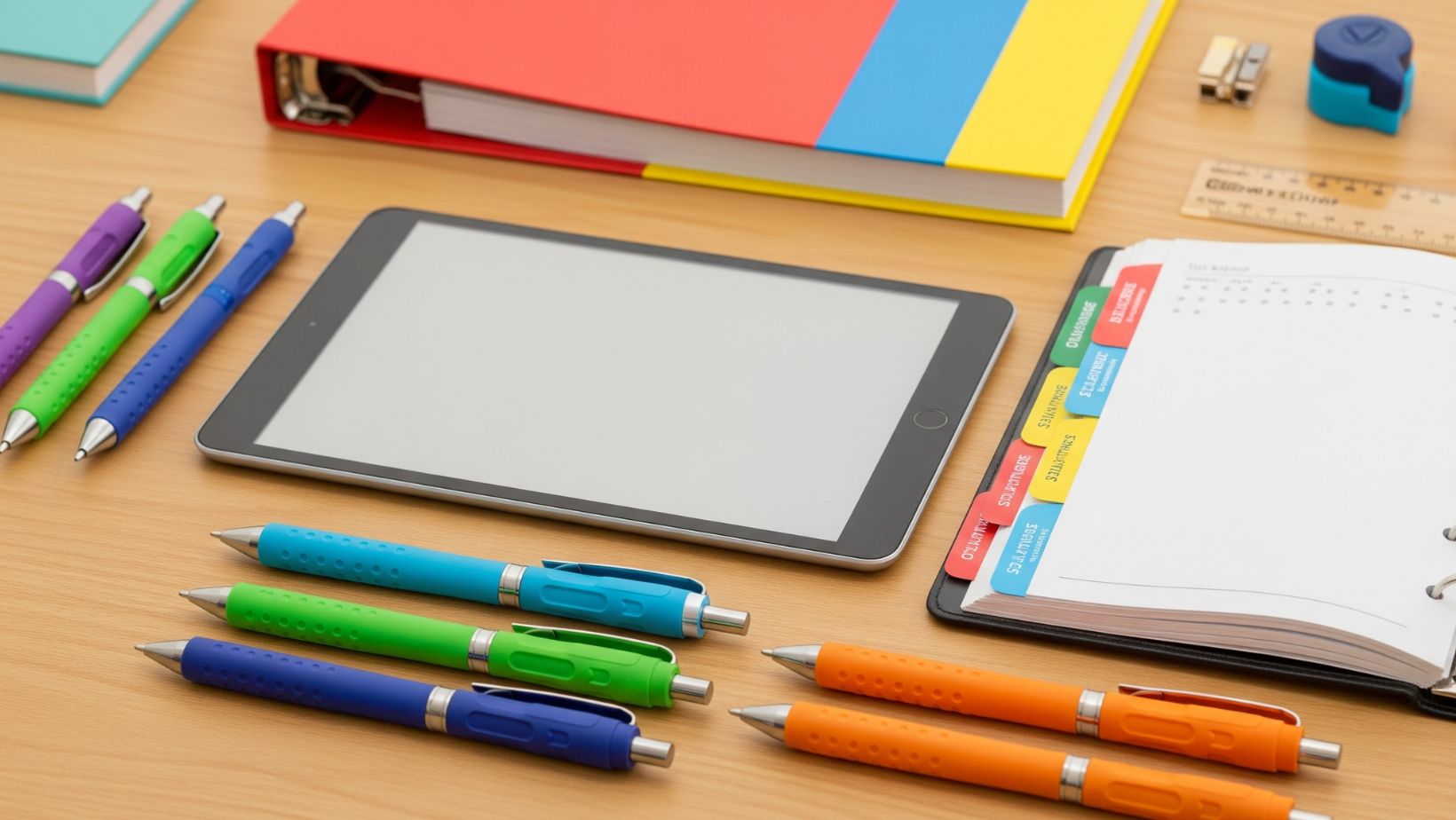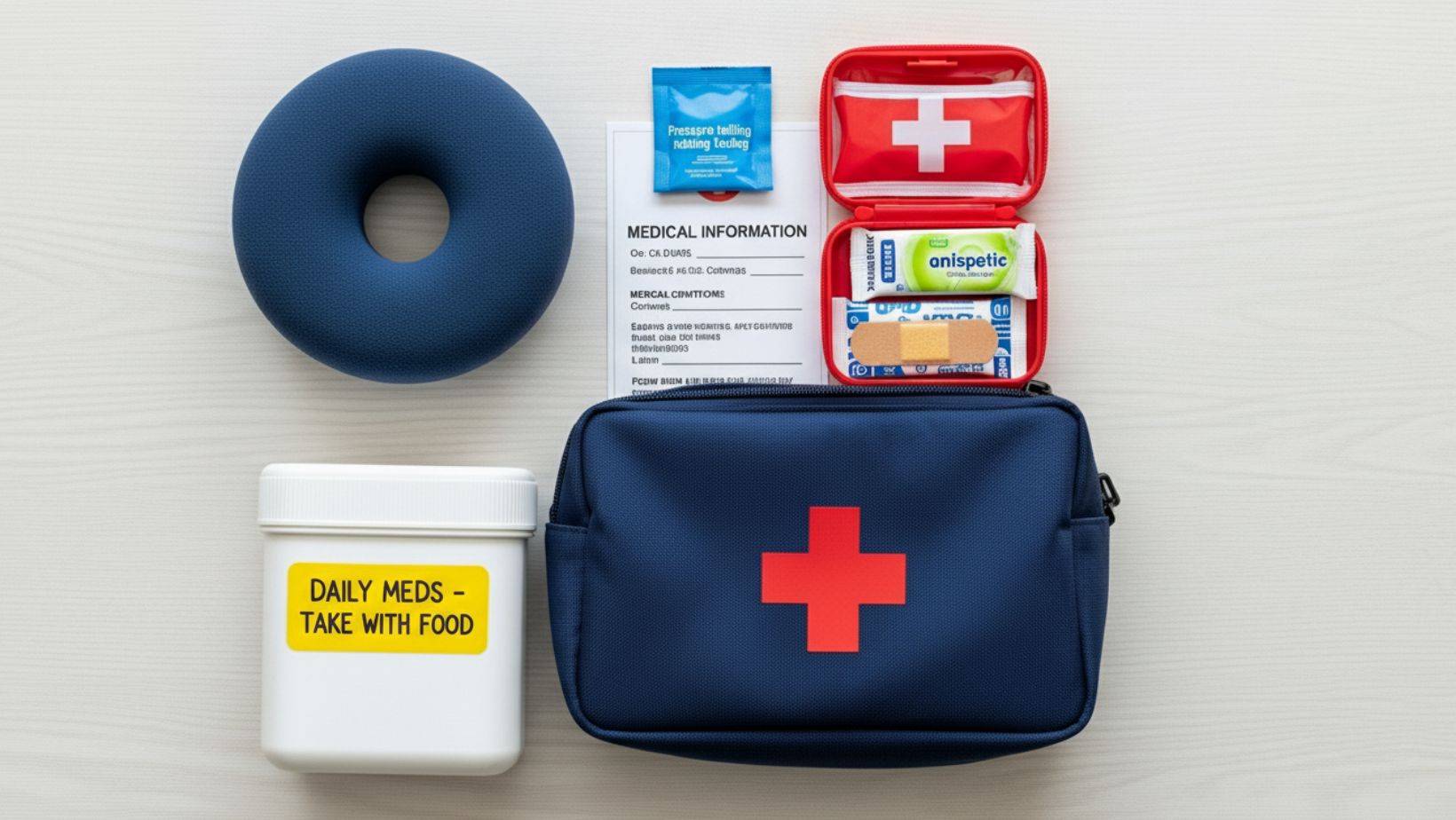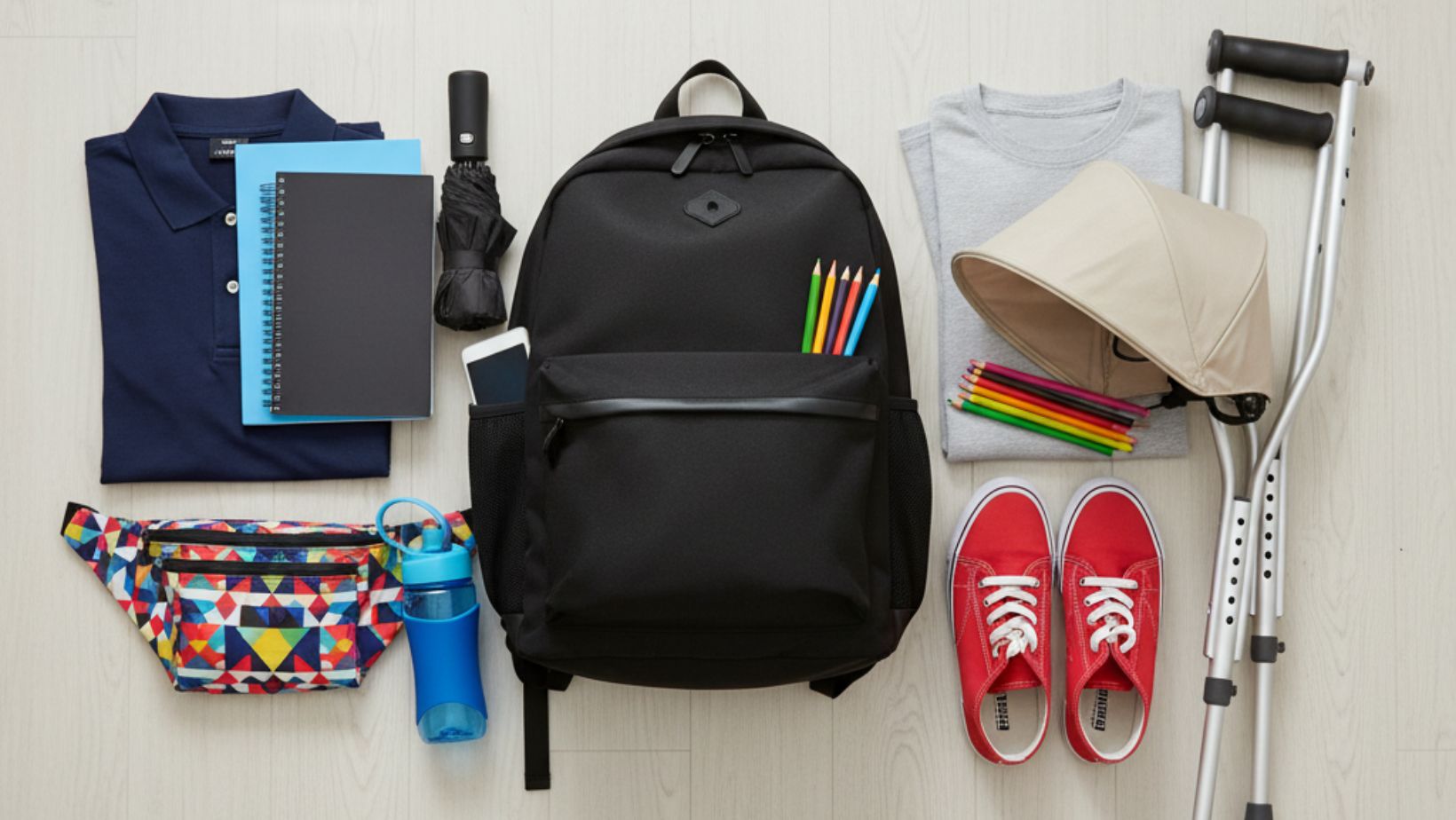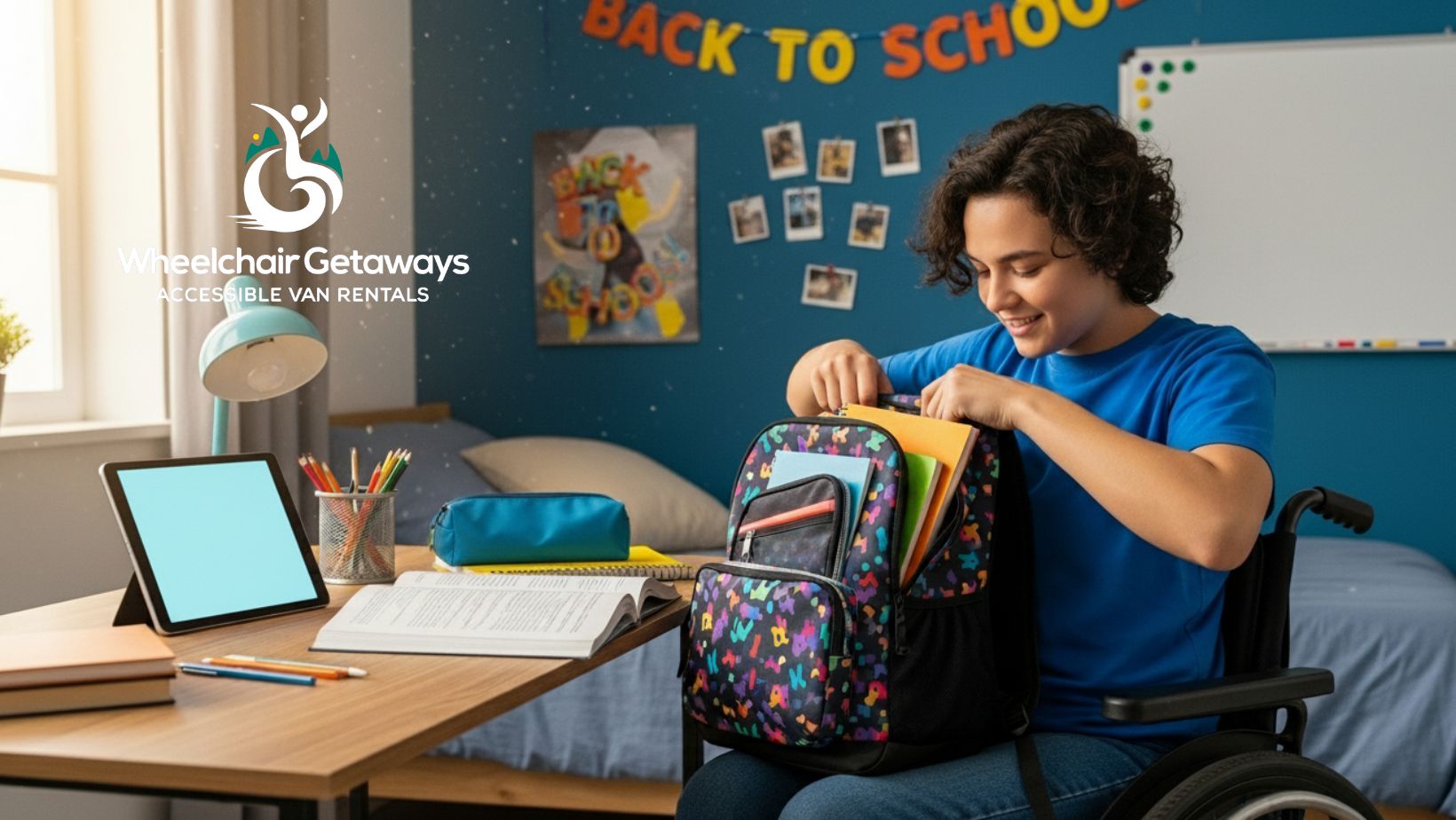Whether kids are starting elementary school, transitioning into middle school, or preparing for high school, the first day is always an exciting experience. They look forward to picking the perfect first-day outfit, showing off their new backpacks, sharing summer stories with friends, and experiencing something new.
But for families raising a child with a mobility disability, that excitement often comes with a long list of worries. Will the bus have the right accessibility support? What happens if the wheelchair battery runs low during the day? Who will step in if something goes wrong between classes?
To ease those concerns, we’ve compiled a back-to-school checklist for students with mobility needs, so they’re all prepared before the first homeroom bell rings.
The Essentials: Your Academic and Medical Arsenal
When your child is living with a physical disability such as dystonia, cerebral palsy, muscular dystrophy, or another condition that affects movement and makes writing difficult, you might need some accessible items and medical supplies beyond the standard school supplies to make each day a lot smoother.
Core Classroom Supplies for Mobility-Impaired Students
- Adaptive Tools: When it comes to writing, ergonomic pens with cushioned grips may reduce hand strain, while pencil weights can help stabilize a student’s hand and improve control. Similarly, a tilted writing surface can improve posture and reduce muscle strain while writing or drawing. There are various typing aids, such as head pointers, mouth sticks, hand clips, page turners, or keyguards, that can assist a student with limited hand movement in typing on a keyboard.
- Organizers and planners: A planner with large print or tactile tabs can help manage homework, therapy sessions, and doctor visits, ensuring that nothing falls through the cracks. You can even purchase a color-coded binder that’ll make it easier to find materials quickly.
- Tech for accessibility: Devices like tablet mounts for wheelchairs, voice-to-text apps such as Dragon Dictation, and screen-reading software can make learning smoother and more independent. Don’t forget to install note-taking apps such as AudioNote, Notability, and Microsoft OneNote, which allow students to organize notes, record lectures, and even share them with teachers or classmates. Many schools have even installed Eye Gaze Technology, which helps students with mobility impairments use eye movements to control cursor movements and issue commands.

Medical and Personal Care: On-the-Go Preparedness
While school nurses are available to help with medical emergencies, it’s often the minor problems, such as a scraped knee on the playground or skin irritation from a brace, that can cause the most stress. To avoid that, consider packing the following medical and personal care essentials:
Medication management
Many students with mobility disabilities use medication to manage muscle stiffness, pain, or fatigue. Missing a dose of an antispasmodic, for example, could lead to painful muscle tightness that makes writing or even sitting through class uncomfortable.
Students with spina bifida may need medication to manage bladder or bowel function, which can become urgent during the school day if overlooked. Others may take medicines that prevent seizures or help with chronic pain.
When packing a backpack, place required medicines in a clearly labeled container, along with a laminated card that includes the dosage, a doctor’s contact information, and a brief description of the condition.
First-aid kit
Playground bumps, scrapes in the hallway, or skin irritation from mobility devices are common. A small, personalized first-aid kit with antiseptic wipes, bandages, and skin-protective ointments can save time and avoid unnecessary trips home.
Comfort items
Since wheelchair users spend most of their school day seated, it can lead to painful and irritating pressure sores. To prevent this, a pressure-relieving cushion for their chair and a small spray bottle of skin protectant can be lifesavers.

Tips to Navigate the Campus with Confidence
When starting school after a long summer break, crowded hallways, stairwells, labs, lobbies, auditoriums, cafeterias, and administrative offices might seem overwhelming. However, simple steps can help avoid last-minute stress and panic.
Before the First Bell: The Pre-School Year Prep
Campus Walk-Through
This is one of the most important steps. A campus tour before school starts helps students assess the layout before it gets too crowded. You can figure out the most accessible routes between your classes, locate accessible restrooms and elevators, and find quiet spots to take a break if you need one. This allows you to plan your day and feel confident on that first morning.
Transportation plans
Some parents prefer to drive their child to school themselves, while others choose bus transportation. If you’re considering the school bus, consider asking the following questions:
- Is the bus wheelchair-accessible?
- Who helps with boarding and securing equipment?
- What’s the backup plan if a lift breaks down?
Since transportation is a “related service” under the Individuals with Disabilities Education Act (IDEA), it must be included in your child’s Individualized Education Program (IEP). This means the school is legally required to provide and fund it. If transportation is not included in the plan, you must request an IEP meeting to discuss it.
Like what you’re reading? Subscribe to our newsletter and get new updates directly to your inbox.
Building Your Voice Through Self-Advocacy
You are your kids’ biggest advocate, but you won’t be with them at school. This means your child must be their own spokesperson. For example, if you can’t reach a book on a shelf, say, “Could you please help me get that book?” If you’re struggling to take notes, ask, “Is it possible for me to use my laptop for note-taking in this class?” Let your kids know it’s okay to voice their needs; most people are happy to help.
Take Advantage of IEP and 504 Plans
Did you know that the U.S. Department of Education offers different education plans to support students with disabilities?
For instance, an Individualized Education Program (IEP) outlines learning goals and the specific support required to achieve them, which may include (but are not limited to) one-on-one time with a special education teacher, speech therapy, or physical therapy.
A 504 Plan is a legal document that falls under Section 504 of the Rehabilitation Act of 1973, which is a civil rights law. Developed for children with physical or mental impairments, this plan levels the playing field without altering the curriculum itself, so the child has equal access to the same education as their peers.
Both plans are legally binding, which means schools are required to follow them. If your child doesn’t currently have either plan but faces barriers at school, it may be time to request an evaluation.
Back-to-School Shopping for Students with Mobility Needs
While pencils and notebooks are a given, you must think beyond the usual list when doing back-to-school shopping for your child. This includes:
Bags and essentials
Standard backpacks don’t always work for wheelchair users or students using walkers. Look for lightweight designs that clip to the chair or sit on the back without dragging against the wheels. Side-hanging organizers or lap bags also provide quick access to homework, tablets, or snacks without needing help. Don’t forget to buy a wheelchair poncho, an attachable umbrella, or a UV canopy.
Drink holders and pouches
A sturdy cup holder attached to a wheelchair frame or walker helps avoid spills and keeps hands free for steering. Small zippered pouches can also hold essentials like hand wipes, inhalers, or a phone, so kids won’t have to juggle them on their lap while moving down the hall.
Comfortable clothing
Buttons and zippers can be frustrating for kids with limited dexterity or muscle strength. Adaptive clothing lines now offer magnetic closures, side-open pants, and tag-free tops that make dressing easier. Comfortable fabrics also help reduce skin irritation and chafing that can occur from prolonged sitting in a wheelchair.

One Week to Go: Your Final Back-to-School Checklist
With just a week left, it’s time to double-check the little details. This quick run-through will make sure you’re not scrambling the night before classes start:
- Stock up on pencils, notebooks, and adaptive tools
- Review the medical bag and replace any missing or expired supplies
- Inspect wheelchair, walker, or crutches for loose screws, worn tires, or adjustments
- Charge mobility aids, communication devices, and backup power banks
- Print or save copies of IEP/504 plans for teachers and staff
- Confirm transportation schedules with the bus driver or service
- Mentally walk through daily school routes
- Lay out first-day outfit and pack bag for an easy morning
Enjoy an Accessible Vacation with Wheelchair Getaways
After weeks of school prep, both kids and families deserve a breather. You can either recharge at home or take one last trip before the school routine starts. If you’re planning on visiting cousins, heading to the beach, or going to a theme park, Wheelchair Getaways has you covered.
We offer accessible van rentals in over 200 locations across the USA, making it easy to find a vehicle wherever the adventure takes you. Our wheelchair-accessible vans are equipped with ramps, lowered floors, and secure tie-downs, ensuring everyone rides safely and comfortably.
Thanks to our flexible rental schedule, you can reserve a vehicle for a few days, a week, or even longer. Plus, our friendly support team is always just a call away to help you select the right vehicle and walk you through its features. For reservations, fill out this online form or call us at (866) 224-1750.
